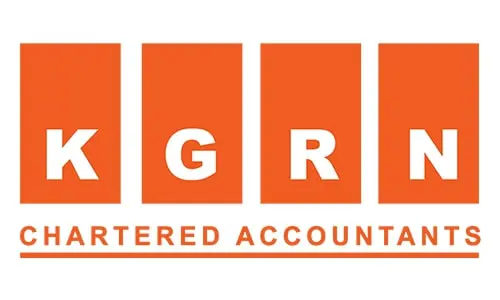When it comes to the process of dissolving a business, the laws that govern companies in different countries and regions around the world utilize a variety of distinct terms. One can frequently hear phrases such as “deregistration” and “dissolution,” but one can also hear phrases such as “liquidation,” “striking-off,” or even just the phrase “the closing down of a business company.” Deregistration and voluntary liquidation of a company are the two primary courses of action that can be taken in Hong Kong in order to wind down a private company limited by shares that is in good financial standing.
Application in the Real World: Deregistration vs Liquidation
It will be discussed in detail in this part what the essential requirements are for deregistration as well as the basic distinction between deregistration and the idea of liquidation.
Although deregistration is not a statutory legislation in the United Arab Emirates, it is a practical practise that is employed by some of the concerned licencing organisations in the different Emirates with the ultimate goal of revoking a licence and shutting down a firm in the country. While deregistration is less severe than the liquidation process, which is the normal and only way for winding down organisations at most licencing agencies under UAE law, it is less time-consuming and involves less requirements. The distinction between the liquidation and deregistration procedures, as well as understanding the needs of each, is thus critical.
Company Deregistration
Disqualification from licensure is often controlled by internal criteria and procedures established by the relevant licencing organisations and published on their websites. Generally speaking, the following are the fundamental requirements for deregistration:
After the completed application (as detailed above) and deregistration fees are submitted, the authorities will issue a final certificate proving the deregistration and termination of a company’s licence.
Company Liquidation
The provisions of Federal Law No. 2 of 2015 on Commercial Companies provide a clear definition of the term “liquidation” (the “2015 Law”). So long as a company’s Memorandum of Association or Articles of Association do not contain special provisions or provisions that are inconsistent with or contrary to the 2015 Law, the liquidation process must be conducted in accordance with those provisions of the 2015 Law that are in effect by default.
Liquidation may be voluntary or mandatory, depending on the circumstances (through a court order). A shareholder resolution approving the liquidation of the firm and the appointment of a liquidator is passed by the shareholders. If the shareholder(s) disagree and seek liquidation via the courts, the appropriate court should establish the manner of liquidation to be utilised as well as appoint a liquidator in accordance with the applicable laws. No matter how the liquidator is chosen by the partners, his or her responsibility does not end with the partners’ death, bankruptcy, or insolvency or with the partners’ interdiction.
The following are the most important conditions for the liquidation procedure (particularly voluntary liquidation) to be successful:
After the liquidator has completed the liquidation process and submitted the liquidation report to the appropriate licencing agency, the latter will issue a liquidation certificate showing that the business has been liquidated and closed down completely.
Company Deregistration and Liquidation: Responsibilities and other legal ramifications
The foregoing points are relevant in practise because a business may be deregistered without having to go through a liquidation procedure, and in particular without having to appoint a liquidator, who is required to inform creditors and file a liquidation report.
Upon the dissolution of the corporation and the appointment of a liquidator Given the absence of a liquidator in the deregistration process, as well as the absence of a liquidation report, it is reasonable to wonder whether the appointment of a liquidator as well as the adoption of the dissolution and liquidation phases are still required even after the firm has been deregistered.
The following is stated in Article 308 of the 2015 legislation:
In the event of a liquidation, “one or more liquidators appointed by the partners, the General Assembly, or any other similar body, shall carry out the liquidation, provided that the liquidator is not currently an auditor of the company or has audited the company’s accounts within the five-year period preceding the appointment.”
Several people have voiced concerns about the company’s management’s and shareholders’ responsibilities and obligations. They have also expressed concerns about the licencing authority’s role and the extent to which it would participate in any liquidation processes that might begin before or after the deregistration is finalised, among other things. It is important to note that some liquidation procedures, such as publishing in a newspaper, need the consent of the authorities since the request for publication must be addressed to the relevant media via the related licencing agency before it can be carried out.
Notification of a corporation’s creditors is required by law.
Throughout the liquidation process, the liquidator is responsible for preparing for publication in accordance with Article (316) of the 2015 Act, which states:
If a company is dissolved, all obligations owing by the corporation are immediately due and payable. ” In order to begin the liquidation process, the liquidator must inform all creditors through registered letters with a receipt confirmation, requesting that creditors submit their claims. In addition to two local daily newspapers, one of which will be in Arabic, the announcement will be broadcast on radio stations throughout the region. In any case, the notice of liquidation must provide creditors with a minimum of 45 days from the date of the notice to lodge their claims.”
Due to the fact that deregistration does not require creditors to be informed, an issue may emerge about the duty of management and owners to the company’s creditors after deregistration. As a result, care should be used while proceeding down the deregistration route in order to prevent a scenario in which shareholders and management may be held accountable to any creditor(s) or third party (ies).
Primary Differences:
The purpose:
The principal distinction between liquidation and deregistration pertains to their respective objectives. Deregistration signifies the official cessation of operations for a business, whereas liquidation is a more intricate process designed to wind down the affairs of a company that is insolvent or non-viable.
Condition of Finances:
Deregistration is generally pursued by corporations that have achieved solvency and are capable of fulfilling their financial commitments. Contrarily, liquidation is a procedure that is linked to financial distress, as it is implemented in situations where a company is incapable of repaying its debts due to insolvency.
Participation of Creditors:
Deregistration results in the distribution of the company’s assets, if any, among its shareholders. Priority is given to repaying creditors with the proceeds from the sale of assets during liquidation; shareholders are entitled to any remaining funds.
Common Reasons for Closing a Company
Companies go out of business for a variety of causes, some of which are financial difficulties, others are caused by external circumstances, and some are even the result of internal mismanagement. Some of the most common reasons why businesses choose to close their doors are as follows:
Difficulties with finances: This is a significant dilemma. If a firm is unable to pay its financial obligations, it may be compelled to shut down. It’s possible that this is the result of falling sales, rising debt, or an inability to accumulate sufficient capital.
Changes in the market: Industries are always progressing, and if a company’s goods or services become obsolete or if it is confronted with heavy competition, it may have a difficult time surviving. Consider companies who have not yet responded to the ever-changing patterns of internet commerce.
Problems with management: Ineffective leadership can unquestionably bring down an organization. It is possible that this is due to poor decision-making, a lack of preparation, or just a lack of the abilities that are required to manage a successful firm.
Problems with the law: If a firm finds itself in legal difficulty, it may be extremely detrimental to both its reputation and its financial line. A corporation may be forced to shut down if it is confronted with severe legal challenges.
Inadequate succession planning: Every owner of a business needs to have a plan for the future, which should include a plan for what will happen to the company when they retire or go on to other things. In the event that there is no obvious successor in sight, it has the potential to generate uncertainty and instability, which may ultimately result in the death of a corporation.
Conclusion
The notion of deregistration arose as a consequence of common procedural practises adopted by a large number of licencing organisations in the United Arab Emirates (UAE).
The deregistration route expedites the cancellation of a limited liability company’s licence and ensures its closure as quickly as feasible, while leaving dissolution and liquidation procedures up to the shareholders, depending on the company’s circumstances. During the transaction, the company’s management and shareholders may be held liable for any (or all) of its business debts if its notice and publicity responsibilities are not met.
Are you looking Liquidation and Company Deregistration in Dubai. Contact KGRN firms in Dubai. Deregistration of a company in the United Arab Emirates is both legal and feasible.







